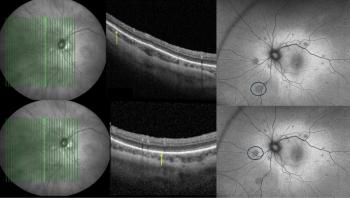
Steroid solutions more likely to be contaminated
Ophthalmic solutions that contain steroids are 5.8 times more likely to be contaminated than steroid-free solutions.
Ophthalmic solutions that contain steroids are 5.8 times more likely to be contaminated than steroid-free solutions, according to the results of a study published online ahead of print in the British Journal of Ophthalmology.
Danny Kauffmann Jokl, MD and colleagues from Columbia University and New York Medical College, USA conducted a study to assess the frequency of contamination of ophthalmic solutions in a long-term care facility. A total of 123 solutions used for patient treatment were cultured for bacteria.
Ten (8%) of the multiple dose solutions were contaminated with bacteria: four (50%) of eight steroid containing anti-inflammatory solutions, two (33%) of six combination antimicrobial and steroid containing anti-inflammatory solutions, two (6%) of 34 solutions for glaucoma treatment and two (4%) of 57 medications for dry eye. No mydriatic, miotic or non-combination antimicrobial solutions were contaminated.
Proteus mirabilis was found in eight (80%) of the 10 contaminated solutions. Thirty percent of the contaminated bottles, upon visual examination, were considered "dirty".
It was discovered that steroid-containing solutions are 5.8 times more likely to be contaminated than steroid-free solutions. The authors believe that the frequent contamination during reuse of certain steroid containing solutions raises the question of whether single-use solutions may offer a safer alternative.
Newsletter
Get the essential updates shaping the future of pharma manufacturing and compliance—subscribe today to Pharmaceutical Technology and never miss a breakthrough.













































